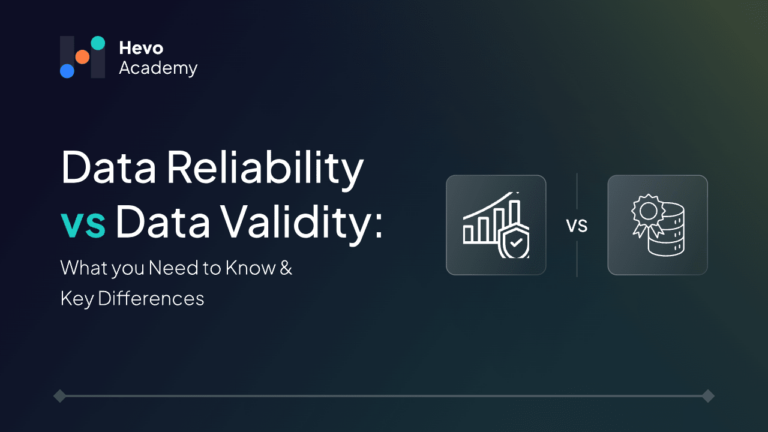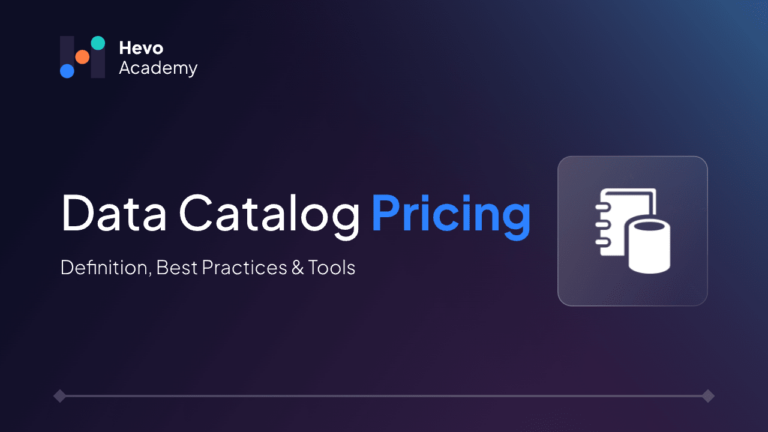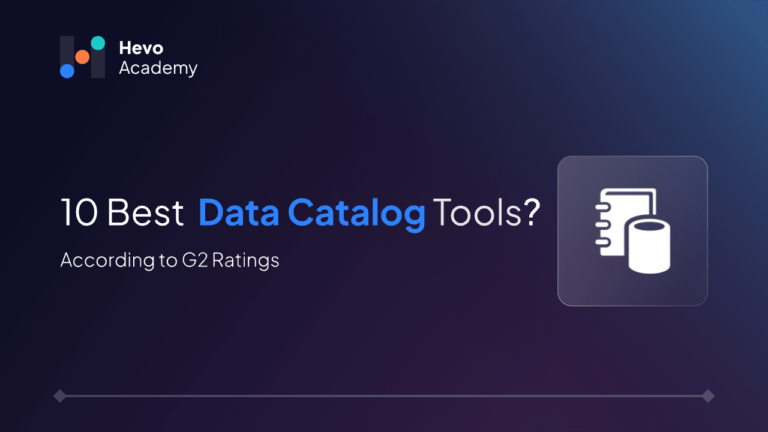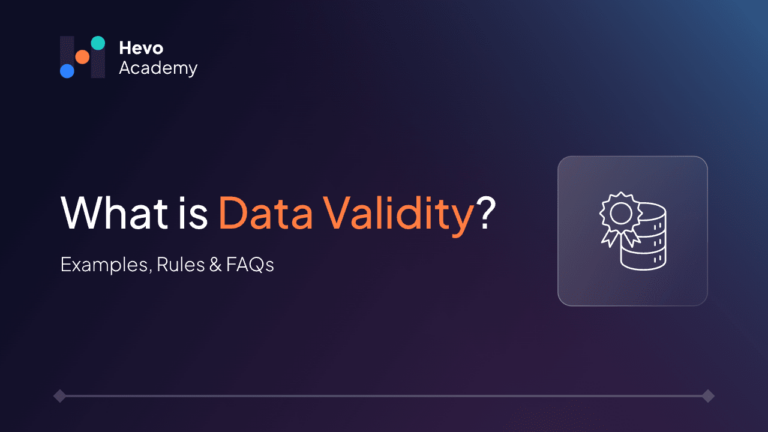Today ensuring data quality is critical to making informed decisions. Businesses use data a lot to plan their strategies, make processes more efficient, and figure out how customers act. Poor data quality can lead to faulty insights, costing companies billions annually. According to a survey by research firm Gartner, the poor data quality costs organizations an average of $15 million each year. There can be many factors for poor data quality like validity, integrity, uniqueness and trustworthiness.
Table of Contents
Two fundamental concepts in data quality are data validity and data reliability. Data reliability and validity are two critical data quality dimensions that ensure data is trustworthy and aligned with its intended real-world context. These two terms are often bundled together and sometimes even used interchangeably, however, they’re very different issues, and therefore have different solutions. Both of them are essential for ensuring that data is both correct and consistent, leading to better decision-making processes.
To get the maximum benefit out of data and analytics, trustworthiness of data is paramount. The risk of poor data quality increases when data lacks reliability or validity, as data that is inconsistent or misrepresents reality can lead to faulty decisions and lost credibility. To build trust, we have to improve the validity and reliability of the data we have, so that people are motivated to use the data and take appropriate evidence-informed action. This article Data Reliability vs Data Validity explores their key differences, offering practical approaches and real-world examples to help you understand and ensure data quality.
What is Data Validity?
Data validity is a measure of how well data matches the situation it’s supposed to show in the real world. Usually data validity is checked and confirmed using a set of predefined rules and standards which ensures the information is fit for its intended purpose. Invalid data can be caused by wrong data entry, datasets that aren’t full, or data that isn’t in the expected ranges. Valid data is important for accurate reporting, analysis, and decision-making because it makes sure that the data being looked at is correct.
Looking for the best ETL tools to connect your data sources? Rest assured, Hevo’s no-code platform helps streamline your ETL process. Try Hevo and equip your team to:
- Utilize drag-and-drop and custom Python script features to transform your data.
- Integrate data from 150+ sources(60+ free sources).
Try Hevo and discover why 2000+ customers have chosen Hevo over tools like AWS DMS to upgrade to a modern data stack.
Get Started with Hevo for FreeWhy Does Data Validity Matter?
- Accurate decision making – Data should be accurate to support accurate decision making. Incorrect information can lead to wrong business decisions. Data validity ensures that the data is properly reflecting the real world scenario intended.
- Trust and credibility – Valid data helps in building trust and credibility within organization and stakeholders. Incorrect information can lead to wrong findings and analysis which results in loss of trust and credibility
- Regulatory compliance – There are strict regulations and compliances which has to be met in data collection, quality and management, violation them will result in heavy penalties. Valid data helps in following these requirements and avoising risk of heavy penalities
What is Data Reliability?
Data reliability represents how consistent the data is. Reliable data should produce the same results when studied repeatedly under the same conditions. Reliable data guarantees that trends and patterns seen in the data are not caused by random errors or abnormalities, resulting in a more robust basis for decision making. Data reliability is crucial to producing reproducible, credible, and verifiable results
Why Does Data Reliability Matters?
- Consistency in Results: Data processes and analyses must be reproducible and consistent when executed multiple times in same scenario . Data consistency is critical for long term analysis and decision makings.
- Reduction of Errors: Data reliability minimizes data errors by keeping data accurate, valid and consistent
- Trustworthy Predictions: Data models and reports will be utilized only when they are trustworthy and has reliable predictions. Inconsistent data can lead to flawed predictions, affecting everything from sales forecasts to operational strategies
Data Reliability vs Data Validity: Key Differences
Reliability refers to the consistency of a measure and whether the results can be reproduced under the same conditions. Validity refers to the accuracy of a measure, whether the results really do represent what they are supposed to measure.
Valid data refers to data that is correctly formatted and stored. Reliable data, on the other hand, refers to data that can be a trusted basis for analysis and decision-making. While data reliability and validity are important, achieving data accuracy requires that data is not only consistent but also correctly represents the information it’s intended to convey. Valid data is an important component of reliable data, but validity alone does not guarantee reliability.
| Aspect | Data Validity | Data Reliability |
| Definition | Reflects how accurately data represents real-world values or requirements. | Ensures data is consistently accurate across different instances |
| Focus | Accuracy and correctness of the data content relative to its intended use. | Consistency and stability of the data over time or across systems. |
| Validation Methods | Content validity, criterion validity, and concept validity | Test-retest reliability, inter-rater reliability, or consistency measures |
| Error Causes | Inaccurate data entries, invalid formats, or missing values. | Fluctuations or inconsistencies in data over time. |
| Example | Ensuring age field contains values between 0-120 years. | Sales data remains the same when extracted multiple times or across multiple dimensions |
| Scope | Typically applies at the point of data collection or ingestion. | Applies across the entire data lifecycle, from collection to analysis. |
| Importance | Ensures that data is correct for analysis | Ensures repeatable and consistent results |
| Time Sensitivity | More time-sensitive; needs to reflect the current reality. | Less time-sensitive; focused on repeatability over time. |
| Dependency | Often dependent on defined rules or criteria (e.g., formats, ranges). | Independent of specific criteria; more about consistency across time. |
| Relevance to Business | Directly affects business operations and decision-making. | Affects long-term trend analysis and data trustworthiness. |
| Usecase | Validating data during ETL processes or when input is collected. | Ensuring reliable historical data in analytics or reporting. |
| Mutual Support | Reliable data must be valid, as correct data underpins consistency | Valid data contributes to reliability, but consistency over time ensures sustained validity. |
| Practical Approach | Implement validation rules, data type checks, and predefined ranges during ETL processes. | Apply versioning, regular audits, and data governance policies to ensure long-term consistency. |
Practical Approach to Ensure Data Validity
1. Automating data validation
Implement strict validation rules during data collection and ingestion. Define accepted data ranges, formats, and constraints that are relevant to your business logic. Incorporate automated validation checks within the ETL pipelines to enforce data integrity rules and detect anomalies in real-time. This minimizes the risk of manual errors and ensures that invalid data is identified and corrected promptly.
2. Regular Data Audits and Expert Oversight
Involve subject matter experts (SMEs) or data stewards to review data periodically. Regular data audits helps to identify potential issues and to maintain a clean datawarehouse, handling missing values, duplicate records and correcting data inconsistencies.
3. Ongoing Validation
Use Content, criterion, and concept validations to ensure data quality
- Content Validity: Focus on ensuring that data accurately reflects business processes by validating source-to-target mappings
- Criterion Validity: Ensure the data is benchmarked against reliable datasets or operational systems. For example sales data in transaction datawarehouses should match that in operational data warehouses
- Construct Validity: Verify that the data used in analytical models or BI tools accurately measures the intended metrics and KPIs. For example, calculations like profit margins or customer segmentation must use accurate data and be based on correct business assumptions.
Practical Approach to Ensure Data Reliability
1. Standardized Processes and Data Governence
Establish uniform standards for data collection, entry, and processing across all teams and systems. Setup comprehensive governance policies that define how data is managed, accessed, and modified. This eliminates variability and ensures data consistency throughout its lifecycle.
2. Error Checking, Data Versioning and Logging
Include automatic error detection and logging for ETL pipelines and data integration processes. These can detect data inconsistencies, missing values, and duplicate records, allowing speedy troubleshoot and repair, decreasing warehouse data reliability risk.
Maintain a version history of data, particularly in environments where data is regularly updated. Data versioning helps track changes, identify discrepancies, and ensure that you can revert to previous versions if issues arise.
3. Reproducibility and Consistency in Data Handling
Document all the data collection, transformation and processing steps to ensure that data waorkflows can be easily reproduced. Reproducibility is vital in ensuring that data is reliable and consistent over time.
Create and maintain a data dictionary, a comprehensive reference for metadata, data definitions, and business rules. It ensures everyone in the organization understands and uses data consistently. This is particularly important in large data warehouses where multiple teams access and analyze data from different sources.
4. Test-Retest Reliability and Inter-Rater Reliability
In a data warehouse setting, test-retest reliability can be applied by periodically comparing data from different time periods. For example, sales data can be extracted multiple times to ensure consistency. Repeating tests at intervals helps ensure that data processes are stable and reliable over time.
When multiple teams or systems are involved in data collection, inter-rater reliability ensures consistency in how data is interpreted and processed. This is particularly important in environments with manual data entry or data subject to interpretation (e.g., user-generated content). Regular training of teams and cross-validation of their outputs can help ensure that everyone follows the same protocols.
5. Backup, Recovery, and Use of Reliable Instruments
Regular backups and having a robust recovery plan in place are essential to ensure that data remains reliable even in the event of failure or data corruption. For frequently updated environments, automated backups with minimum disruption are necessary to ensure that the data remains reliable and accessible in case of an issue.
Ensuring that tools and technologies used for real-time data processing are tested for reliability is crucial. For example, using stream processing frameworks that can handle large volumes of data ensures that data streams are neither missed nor duplicated. Monitoring event streams for errors or loss ensures that the data ingested into the system remains reliable.
Quick Tip: Understanding data integrity vs data accuracy alongside reliability and validity ensures that data not only maintains its correctness over time but also aligns with its intended purpose.
Data Reliability and Validity Examples
Data Reliability Examples:
- Sales Data Consistency Over Time: In a retail data warehouse, sales data collected daily should remain consistent over time. If you extract sales data for a specific store multiple times across different days, the figures should be identical, assuming no corrections have been made to the original data. This consistency shows that the data collection process is reliable.
- Customer Feedback Analysis: When conducting a customer satisfaction survey, reliable data means that if the same customer provides feedback using the same survey at different times, their responses should be consistent, assuming their opinion hasn’t changed. Reliability in this context ensures that the survey instrument consistently captures customer sentiment.
Data Validity Examples:
- Accurate Customer Age Data: In a data warehouse storing customer information, data validity would ensure that the “age” field only contains valid numerical values within an expected range (e.g., 0-120 years). Invalid data, such as negative numbers or ages exceeding human lifespan, would be flagged and corrected.
- Product Performance Metrics: In an e-commerce data warehouse, validity means that the “return rate” metric accurately represents the proportion of products returned by customers. If the return rate is calculated based on flawed data (e.g., missing transaction records or misclassified products), the validity of this metric would be compromised. To ensure validity, it must accurately reflect actual product returns, using verified transaction data.
Challenges in Data reliability and Data Validity
A data collection process may be highly reliable, but without validity checks, the end result could still be low-quality data. Conversely, perfectly valid data may lack reliability if inconsistent methods are used to collect or process it.
Key Challenges in Data Validity:
- Incomplete Data: Missing fields or incomplete data can severely affect validity. For instance, key fields like customer IDs or transaction amounts missing from records can render an entire dataset invalid for analysis.
- Incorrect Formatting: Data that does not conform to required formats (e.g., dates in the wrong format, out-of-range numerical values) will fail validation checks, leading to inaccurate results and faulty conclusions. Integrating data from different sources may also introduce inconsistencies that undermine validity.
- External Factors: Changes in external conditions, such as new regulations or industry standards, can impact the validity of existing data. Data that was once valid under previous rules may no longer meet the current criteria, requiring updates or adjustments.
Key Challenges in Data Reliability:
- Human Error: Inconsistent data entry practices, misinterpretation, or incorrect coding can compromise data reliability. Even small human errors in critical data points can cause large-scale disruptions, leading to flawed analytics and decisions.
- Complex data integration: Integrating data from multiple sources, especially in complex environments (e.g., multiple databases, APIs, and legacy systems), poses a challenge in maintaining data consistency and reliability. Data from different sources may have different structures, schemas, and semantics.
- Changes Over Time: Data that was reliable when first collected may become unreliable over time due to shifts in context or conditions. For example, a machine learning model built on consumer behavior data might degrade in accuracy as consumer preferences change.
- Inconsistent Data Governance: Without strict data governance policies and stewardship, there may be a lack of accountability, leading to inconsistent data handling practices and unreliable datasets. Data silos and lack of unified standards across systems further compound this challenge.
To maintain data reliability, a consistent method for data collection and processing should be implemented across the board. For data validity, rigorous validation protocols like data type checks, range checks, and referential integrity checks are necessary. Ensuring both data reliability and validity is essential to meet data quality standards, as high-quality data supports accurate analysis and trustworthy decision-making. Implementing automated data quality checks and version control helps ensure ongoing consistency and accuracy, even in dynamic environments where data sources and requirements evolve.
By tackling these challenges with a structured approach, organizations can improve both the reliability and validity of their data, ensuring that it remains a trusted resource for decision-making and analysis.
Conclusion
In conclusion, both data validity and reliability are fundamental to ensuring high-quality data. Validity ensures that the data accurately represents the real-world phenomena it is intended to reflect, while reliability guarantees consistency over time. These checks are not one-time activities but should be integrated as continuous processes within an organization’s data management practices. Establishing a data culture that prioritizes ongoing validation and reliability checks fosters trust in the data, supports sound decision-making, and contributes to long-term business success. By embedding these practices into daily operations, organizations can ensure that their data remains a reliable and valuable asset over time.
FAQ
1. How do you determine the validity and reliability of data?
Data validity is determined by checking if the data accurately represents the intended real-world scenario, typically through predefined validation rules like range checks and data type verification. Data reliability is assessed by verifying consistency across different datasets or repeated measures under similar conditions.
2. Can data be reliable but not valid?
Yes, data can be reliable but not valid. For example, if a data collection process consistently produces the same results but the data itself is incorrect or irrelevant to the desired measurement, the data is reliable but not valid.
3. Can you have validity without reliability?
No, for data to be valid, it must also be reliable. If the data is inconsistent (unreliable), it cannot accurately reflect the real-world scenario, making it invalid.
How to remember the difference between reliability and validity?
Reliability is about consistency—think of repeated results under the same conditions. Validity is about accuracy—ensuring that data correctly represents what it is supposed to measure. Reliable data isn’t always valid, but valid data must be reliable.







